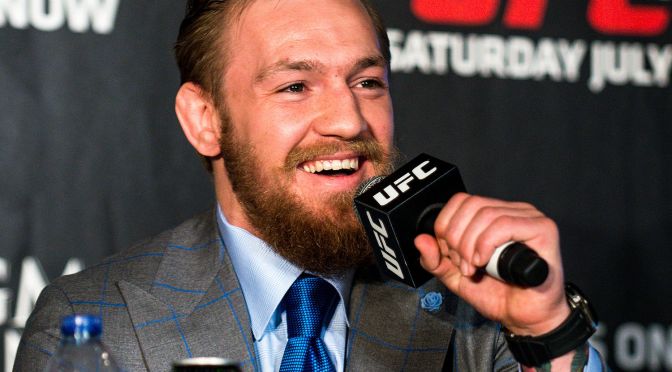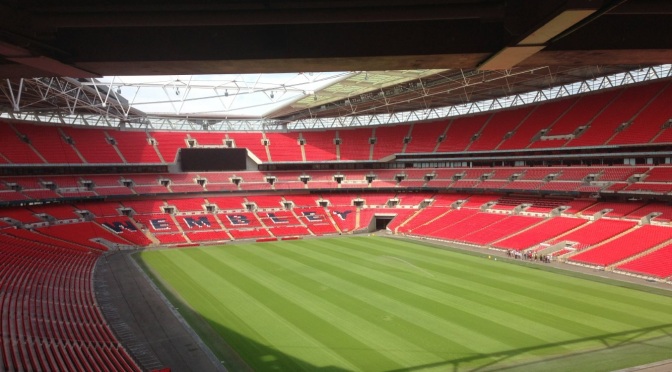I gave some thought to staying up for the recent Conor McGregor fight having signed up to Setanta Sports for the festive holidays (too much football, so much time off!)
Photo: By Andrius Petrucenia (UFC 189 World Tour Aldo vs. McGregor London 2015) [CC BY-SA 2.0 (http://creativecommons.org/licenses/by-sa/2.0)%5D, via Wikimedia Commons
In the end my fondness for sleep won over, though heavy rain meant I woke about 5am on the morning and duly checked the Twitter machine to see what had happened. Early estimates had mentioned 3am for his fight but in what is a growing peeve of mine, this was probably a programme start time rather than the live schedule. Since when were programme start times more relevant than Kick Off times?
Anyhow, I woke just in time to read about McGregor entering the arena in Vegas via Twitter. Listening to the lashing rain, I was contemplating hauling myself, accompanied by a duvet, to the sitting room to watch the fight but before I had a chance, it was all over.
Within a minute or so, the entire fight – all 13 seconds – was available on Twitter to view, and in that moment I thought back to the days of watching Premier League games via Aertel and being delighted (George Graham era) when Leeds United ever even managed to score a goal. Those refreshes always seemed to take an age…
I haven’t watched an entire McGregor fight yet but as someone who has previously practiced martial arts, the fuss around him has been fascinating to follow. Ireland, as a nation, loves to get behind anyone doing well in their trade – but just as he reaches his peak, the begrudgers have begun to emerge. He practices MMA; he isn’t knitting teddy bears.
What’s interesting though is how much more accessible the sport currently is. Gary ‘Spike’ O’Sullivan fought Chris Eubank Jr the same evening but the fight was on Box Office, so a regular Sky Sports subscription was not good enough – more cash was expected if you wished to see the evening’s fight card.
Social Media has and continues to change the way we watch sport. Initially, it allowed viewers become part of the ‘conversation’ around the coverage but – as shown by the McGregor fight – Social Media now has the potential to replace TV coverage altogether – and that will be frightening for any broadcaster currently paying out a small fortune for TV rights.
Of course, it’s easy to argument that the full 90 minutes of any Premier League will never be available immediately and in one chunk, but goals and big talking points are finding their way online easier and more quickly than ever courtesy of smart TV technology and our ability to pause and replay live action all on our own.
A fellow football fan recently told me he was recording as much footage of our local club as possible, and sending highlights to his son in the US the same evening. Sure, it probably isn’t HD standard but when you just want the basics, does that even matter?
Without doubt, there are interesting times ahead for any company broadcasting sport. The balance between protecting their asset (the coverage itself) and engaging with their viewers (who are the main focus for advertisers) will continue to be examined closely, and hopefully innovation, intelligence and quality will win out in the end.



